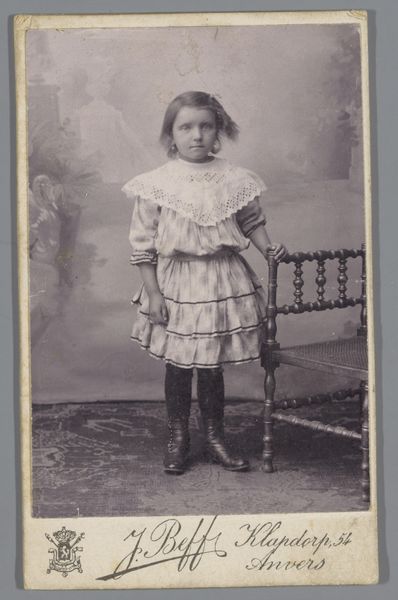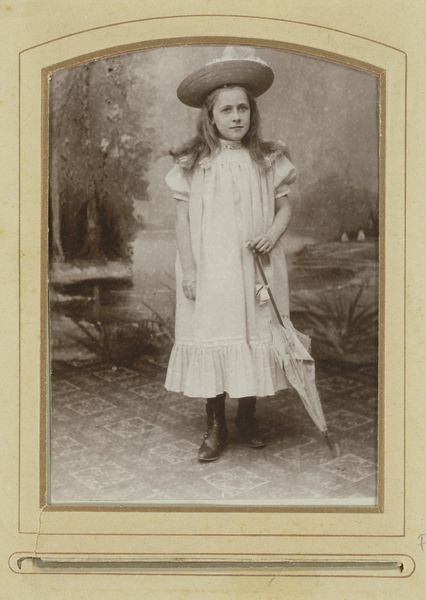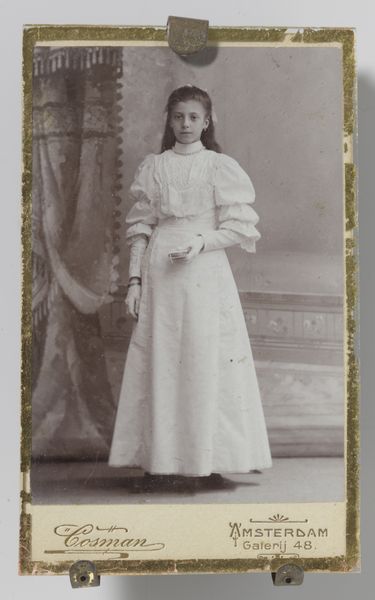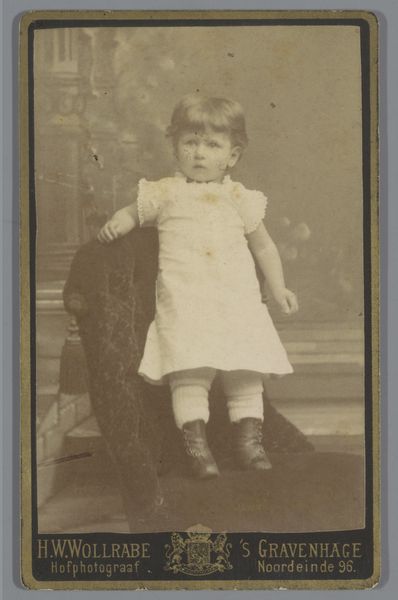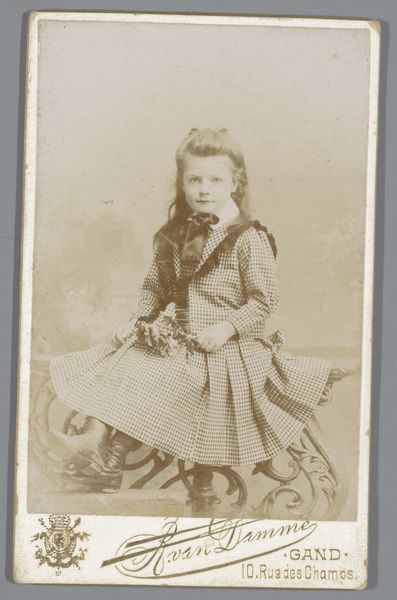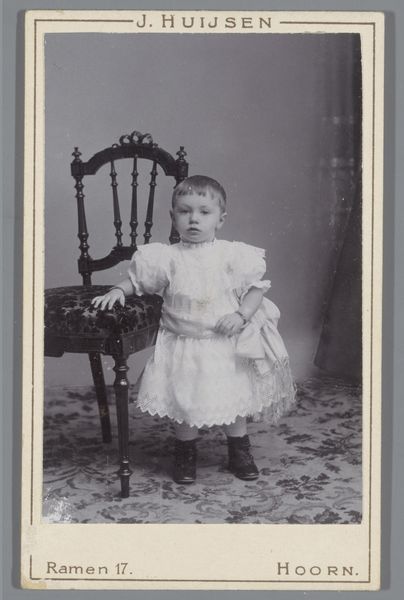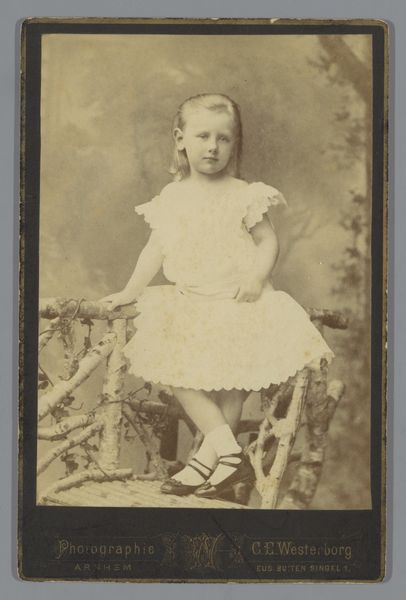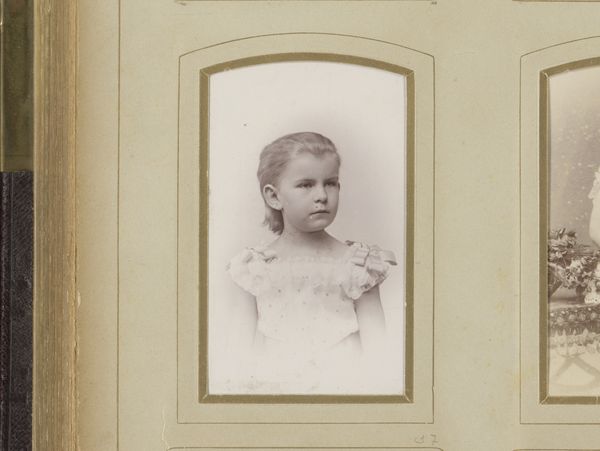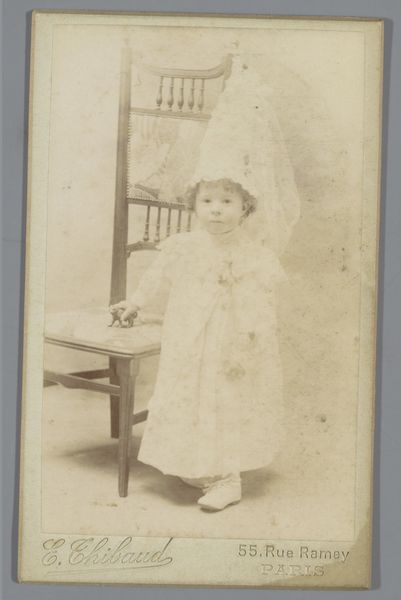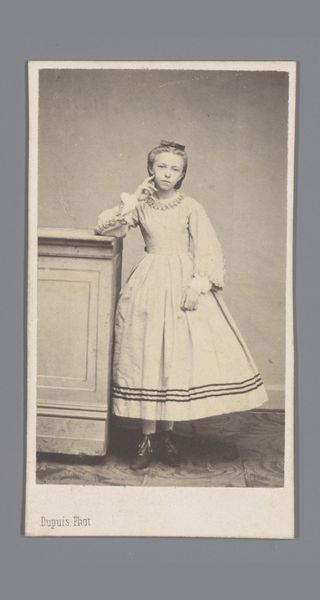
Dimensions: length 105 mm, width 64 mm
Copyright: Rijks Museum: Open Domain
Curator: Here we have Johannes Laurens Theodorus Huijsen’s photographic portrait, “Portret van Betje Haan,” likely produced between 1883 and 1910. The photographic print offers a formal depiction of a young girl posed beside a small table. Editor: There’s an austere stillness to it, isn't there? The way she’s positioned, almost confronting the viewer... The grayscale lends a melancholy air. It feels very controlled, very composed. Curator: Consider the material conditions under which this portrait was made. Photography at this time required specific equipment, chemical processes, and studio space. It wasn't an easily accessible medium; the sitter probably had to travel and dedicate significant time to sit still. And the presence of the studio's address printed at the bottom firmly places it within the sphere of commercial enterprise. Editor: Right, and looking at Betje herself, she's consciously performing girlhood within a very specific societal framework. Her lace collar, the tailored dress…These clothes were meant to communicate status, respectability, adherence to gender norms. It speaks to a careful cultivation of image. What’s also noteworthy is that, although seemingly posed, her stance, her neutral facial expression seem to undermine expectations, subtly conveying her individual presence beyond societal norms. Curator: Absolutely. We see these carefully arranged objects – the table, flowers, even the book under her hand – playing a role in conveying respectability but at the same time they highlight photography as a commodity – carefully assembled to create a specific impression. They speak to the commercial aspects of photographic portraiture. And, who produced the paper on which it’s printed and with what materials? And who developed and maintained the chemistry involved in its production? Editor: This image, though, opens to questions about gender and power – whose gaze is shaping Betje’s presentation, and how did the process of representation negotiate her identity? The lack of spontaneity hints at this struggle of representing marginalized communities within established mediums. Curator: Looking closely at the paper, you see the effects of aging and handling and use. The fading, the subtle textures – they’re all testament to the photograph as a physical object subject to degradation over time and how its production also took part of ecological and industrial degradation. This adds another layer of material history that a digital reproduction simply can’t replicate. Editor: Indeed. What at first seems like a straightforward portrait holds within it complex threads of social and political context. It is fascinating. Curator: I agree. It's a tangible reminder of how images can serve both to document and to shape social narratives.
Comments
No comments
Be the first to comment and join the conversation on the ultimate creative platform.
